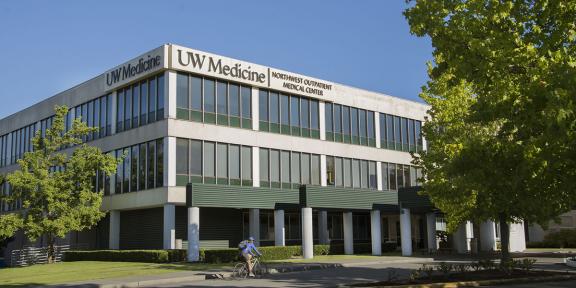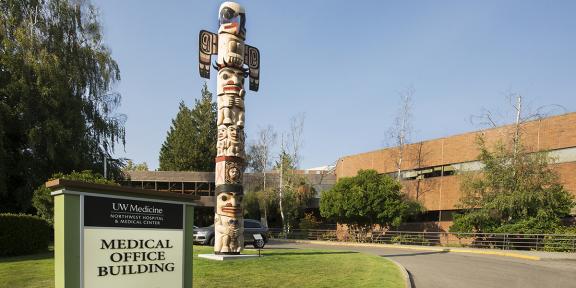Endometriosis
Endometriosis involves pain and endometrial-like tissue growing outside the uterus. Treatment can involve surgery or medicine.
Endometriosis
Endometriosis involves pain and endometrial-like tissue growing outside the uterus. Treatment can involve surgery or medicine.

Key points about endometriosis
- Endometriosis is common in women during the years they can have children.
- It causes tissue that looks and acts like endometrial tissue to implant outside the uterus.
- Treatment may include medicine, surgery, or both.
- It can make it very hard or impossible for a woman to get pregnant.
What is endometriosis?
The tissue that lines the uterus is called the endometrium. Normally, if a woman doesn't get pregnant, this tissue is shed each month during her period. In endometriosis, tissue that looks and acts like endometrial tissue implants outside the uterus. Each month, this misplaced tissue responds to the hormonal changes of the menstrual cycle. It builds up, breaks down, and bleeds. But, the blood has nowhere to go. This causes surrounding tissue to become inflamed or swollen. It can also cause scar tissue, chronic pain, and heavy periods.
Endometriosis is a main cause of infertility in women. This can happen if the tissue implants in the ovaries or fallopian tubes. Tissue can also implant on other organs in the pelvis and in some cases, outside the pelvis.
What are the symptoms of endometriosis?
- Pain and cramps that may be felt in the belly or lower back during your period
- Pain during sex
- Abnormal or heavy menstrual flow
- Infertility
- Fatigue
- Painful urination during your periods
- Painful bowel movements during your periods
- Other digestive problems, such as diarrhea, constipation, or nausea
When should I contact my doctor?
Seek care immediately if:
- You cough up blood — this may be a sign that you are shedding blood from your lungs due to triggered hormones.
- You experience pain due to scars from laparoscopic surgery.
Call your doctor if:
- Your overall pain feels debilitating.
- You are experiencing pain with sex.
If you choose “BOOK OB-GYN ONLINE,” select “Obstetrics and Gynecology” to make an appointment with an OB-GYN.
Endometriosis care at UW Medicine
UW Medicine doctors are experienced in the diagnosis and medical management of endometriosis. We also have specialists in endometriosis infertility management. Our experts are trained to identify and treat adenomyosis, a related condition involving the abnormal growth of endometrial glandular tissue within the wall of the uterus. Adenomyosis may be associated with endometriosis and uterine fibroids.
If you want to get pregnant, but your endometriosis is severe, a reproductive endocrinologist will work with you to manage your pain and meet your goals. If you want to manage your pain, and don't have the goal of pregnancy, surgery is also an option.
Full spectrum gynecology care
UW Medicine doctors specializing in endometriosis
Heath Miller M.D.
Medical Specialties
Patricia A. Rodrigues M.D., F.A.C.O.G.
Medical Specialty
UW Medicine locations specializing in endometriosis
Obstetrics and Gynecology Clinic at Northwest Outpatient Medical Center
Medical Specialties
Hours Today
Appointments
Obstetrics and Gynecology Clinic at UW Medical Center – Northwest
Medical Specialties
Hours Today
Appointments
OB/GYN and Primary Care at UW Medical Center - Roosevelt
Medical Specialties
Hours Today
Appointments
What causes endometriosis?
The cause of endometriosis is not clear. It may be that during a woman's period, some of the tissue backs up through the fallopian tubes into the belly. These cells can implant in the pelvis or be transported through the bloodstream or lymphatics to other parts of the body. Another theory suggests genes are to blame resulting in cells transforming into endometrial tissue. Current research is also looking at the role of the immune system.
Who is at risk for endometriosis?
Any woman may develop endometriosis, but the following women seem to be at an increased risk for the disease:
- Women who have a mother, sister, or daughter with the disease
- Women who gave birth for the first time after age 30
- White women
- Women with an abnormal uterus
How is endometriosis diagnosed?
First, your healthcare provider will review your health history. You will also have a physical exam and a pelvic exam.
A laparoscopy is done to diagnose endometriosis. This uses a thin tube with a lens and a light at the end. It's inserted into an incision in the abdominal wall to see into the pelvic area. The healthcare provider can often find the locations, extent, and size of the misplaced tissue.
Other tests may include:
- Biopsy. For this test, a small tissue sample is removed from the body and looked at.
- Ultrasound. This imaging test uses high-frequency sound waves to create an image of the organs.
- CT scan. This is an imaging test that uses X-rays and a computer to make detailed images of the body. A CT scan shows details of the bones, muscles, fat, and organs. It can find problems that may not show up on an ordinary X-ray.
- MRI. This imaging test uses a large magnet, radio waves, and a computer to make detailed images of organs or tissue.
How is endometriosis treated?
Your healthcare provider will consider your age, overall health, symptoms and other factors when advising what treatment is best for you. Whether you hope to become pregnant will also play a role in your choices.
Treatment choices include medicine, surgery, or both. If symptoms are mild, you may only need pain medicine. In other cases, hormone-based medicine, such as birth control pills, will stop ovulation and slow endometriosis.
Several choices can be used to remove the implants. Healthcare providers may be able to remove abnormal tissue growths using a laparoscope. In other cases, open surgery is needed. Surgery to remove the uterus (hysterectomy) is also a choice.





